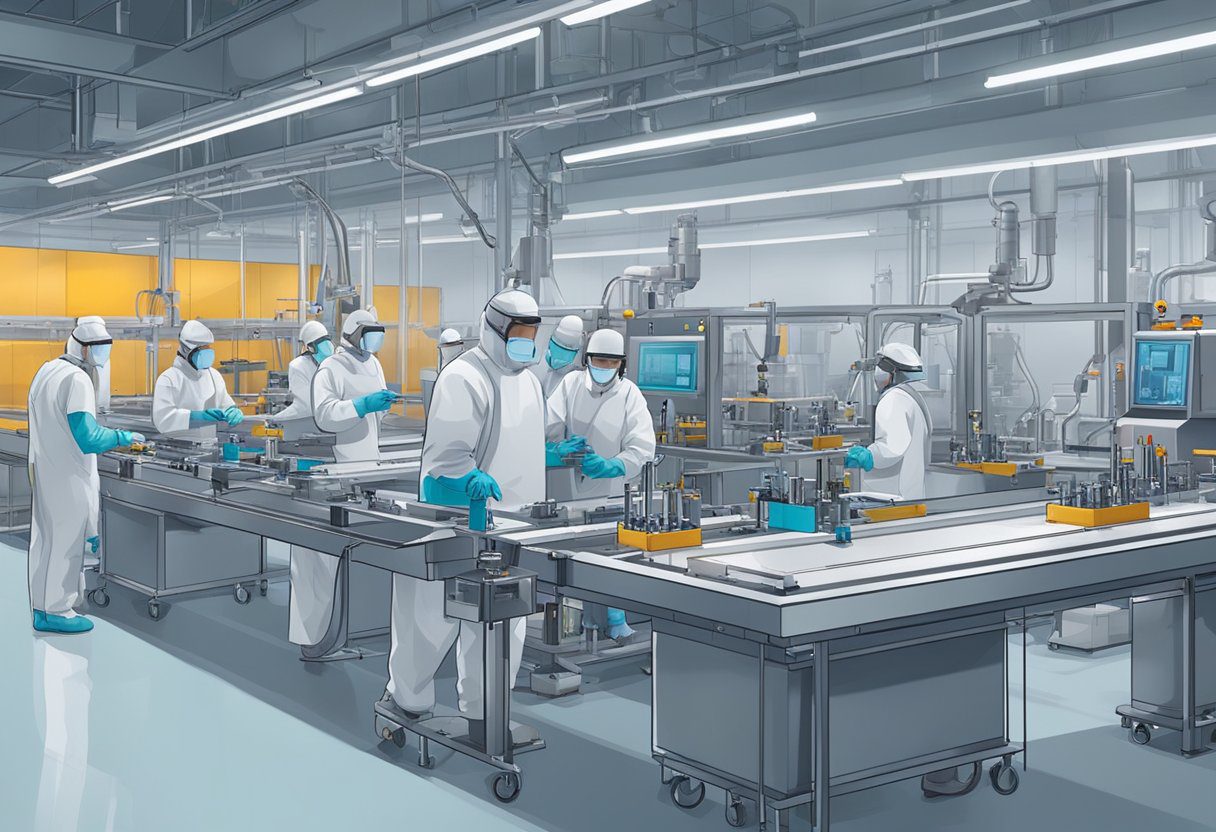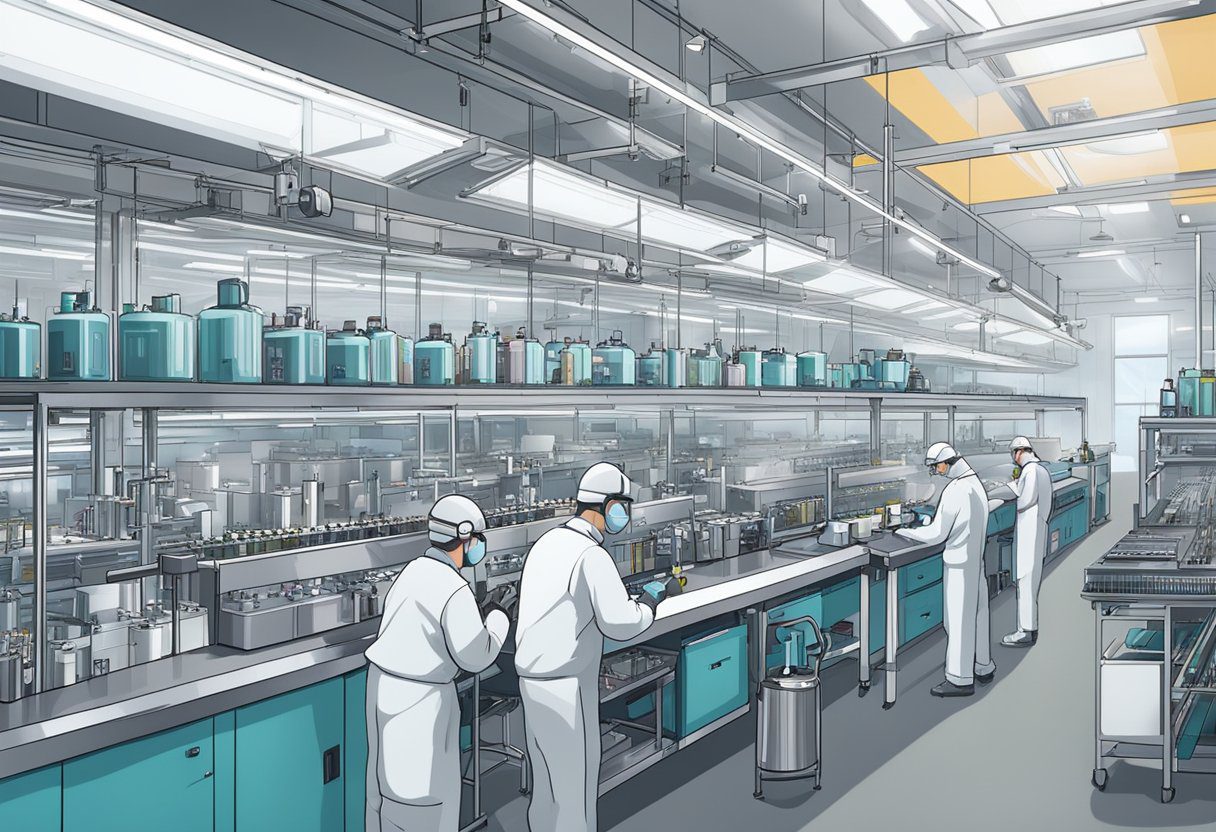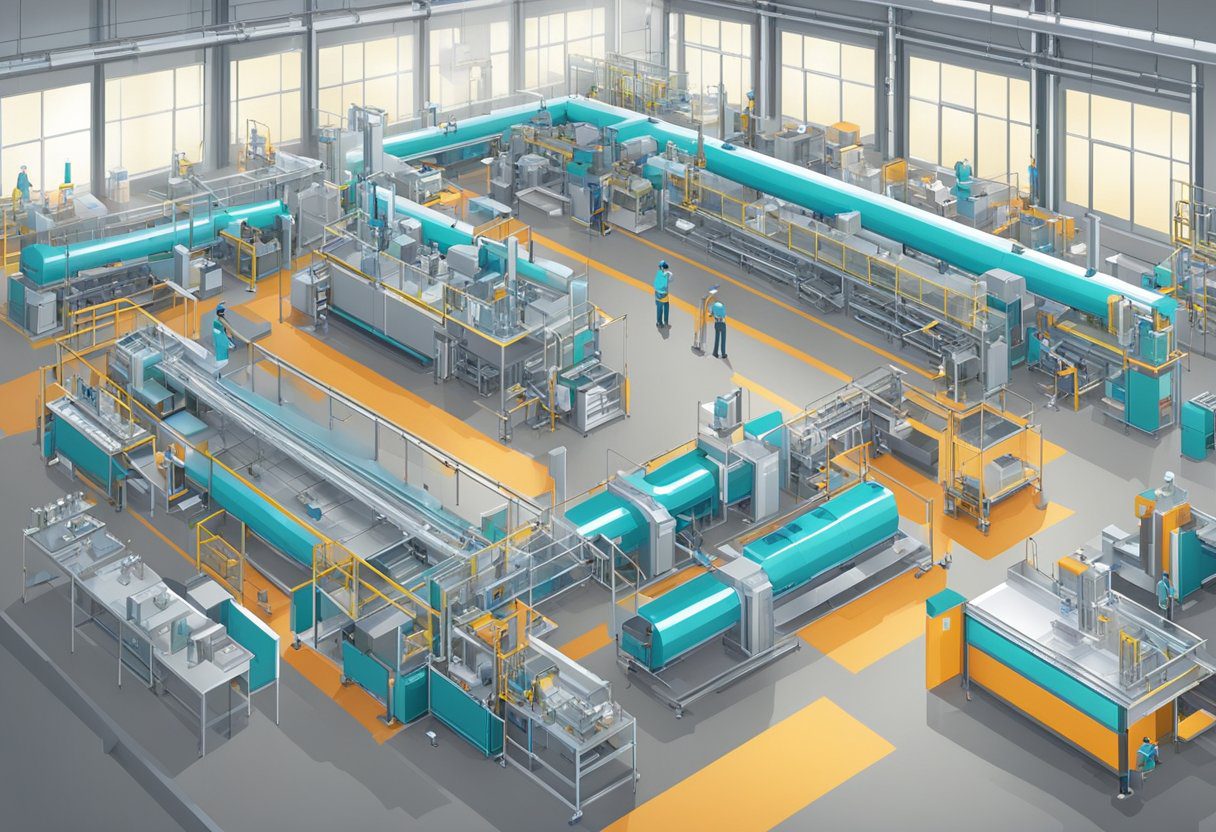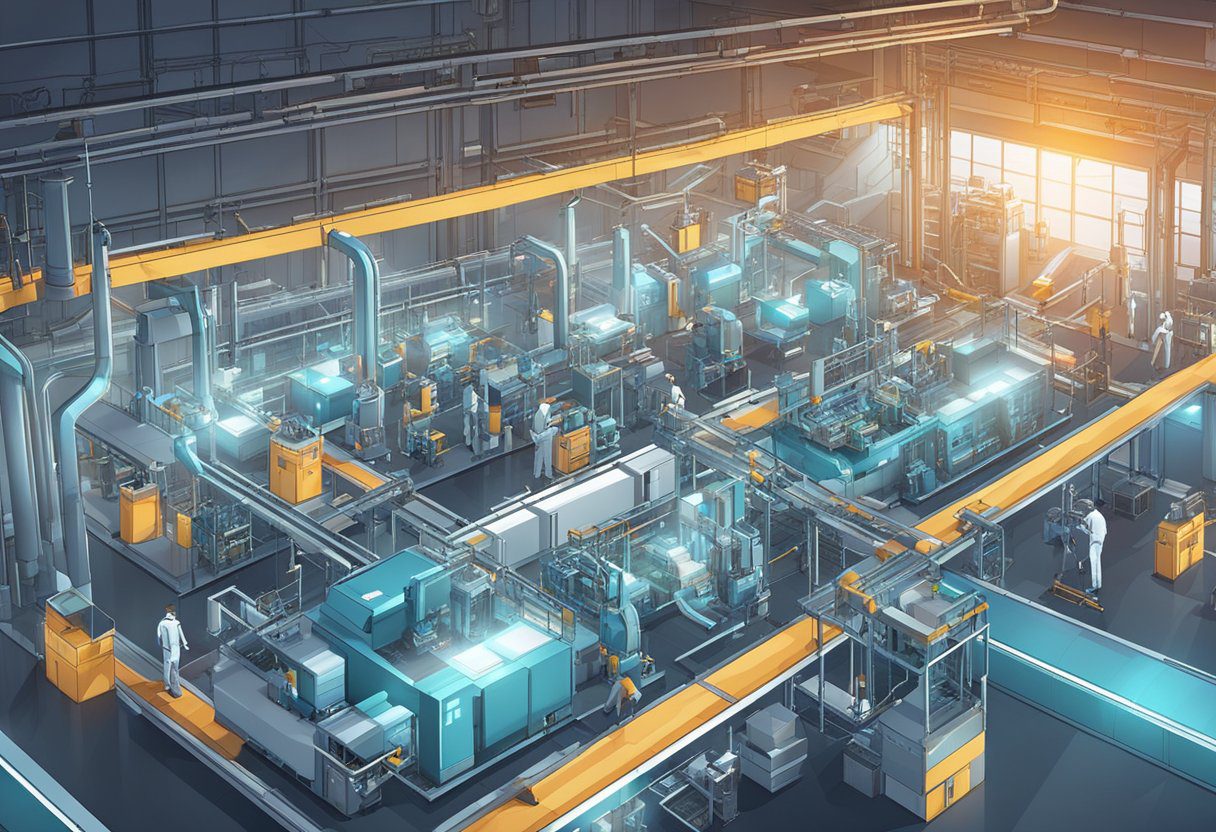Where Are Vapes Made: Understanding the Manufacturing Process
Vaping has become a popular alternative to traditional smoking, with many people turning to e-cigarettes as a healthier option. With the rise in demand for vaping products, many people are curious about where vapes are made.
The majority of vaping devices are designed and manufactured in China, with around 90% of the world’s vaping and e-cigarette devices being produced in the city of Shenzhen. However, it is important to note that not all vaping products are made in China, and other countries such as the United States and the United Kingdom also produce vaping devices.
Vape manufacturing involves a complex process that includes the sourcing of materials and components, the assembly of the vaping devices, and adherence to regulations and standards. The market dynamics of the vaping industry are constantly evolving, with new challenges in production and future developments in technology.
Contents
- 1 Overview of Vape Manufacturing
- 2 Materials and Components
- 3 Manufacturing Processes
- 4 Regulations and Standards
- 5 Market Dynamics
- 6 Challenges in Production
- 7 Future of Vape Production
- 8 Frequently Asked Questions:
- 8.1 Which countries are the leading manufacturers of vaping devices?
- 8.2 What are the top vape brands originating from the UK?
- 8.3 Can you find disposable vapes that are manufactured outside of China?
- 8.4 How does the safety of Chinese-made vapes compare to international standards?
- 8.5 Are there any vaping products that are produced in the USA?
Key Takeaways
- The majority of vaping devices are designed and manufactured in China, with Shenzhen being the hub of the industry.
- Vape manufacturing involves a complex process that includes the sourcing of materials and components, the assembly of the vaping devices, and adherence to regulations and standards.
- The future of vape production is constantly evolving, with new challenges in production and future developments in technology.
Overview of Vape Manufacturing
Global Production Landscape
Vaping has become a global phenomenon, with production taking place in various countries around the world. According to a report by the World Health Organization, China is the largest producer of vaping products, accounting for 90% of the world’s e-cigarettes. This country has been the motherland of the vaping industry since 2003 when a Chinese pharmacist Han Li invented the e-cigarette.
Other countries that manufacture vaping products include the United States, the United Kingdom, Germany, France, and Canada. These countries have strict regulations on the production and sale of vaping products to ensure the safety of consumers.
Key Manufacturing Countries
China is a key player in the manufacturing of vaping products, with the majority of e-liquids and cartridges being produced in this country. The country has a well-established supply chain, with many manufacturers producing high-quality products at affordable prices.
Other countries that are key players in the manufacturing of vaping products include the United States, the United Kingdom, and Germany. These countries have a significant number of manufacturers producing a wide range of vaping products, including e-liquids, cartridges, and devices.
Overall, the global production landscape of vaping products is diverse, with many countries contributing to the industry. The availability of high-quality vaping products has made it easier for people to switch from traditional smoking to vaping, which has many health benefits.
Materials and Components
The production of vapes involves the sourcing of various raw materials and electronic components. The following subsections provide more information about the materials and components used in the manufacture of vapes.
Sourcing of Raw Materials
The raw materials used in the production of vapes include metals, plastics, and other materials. The metals used in the production of vapes include aluminium, stainless steel, and others. These metals are used in the production of the vape’s body, tank, and other components.
Plastics are also used in the production of vapes, particularly in the manufacturing of disposable e-cigarettes. The commonly used plastics in the production of vapes are PC and ABS.
Electronic Components and Batteries
The electronic components used in the production of vapes include microchips, sensors, and other electronic parts. These components are responsible for controlling the temperature, wattage, and other settings of the vape.
Batteries are also an essential component of vapes. The batteries used in vapes are typically rechargeable lithium-ion batteries. These batteries are used to power the heating element and provide energy to the vape.
E-Liquid Ingredients
The e-liquid used in vapes is composed of various ingredients, including propylene glycol, vegetable glycerin, flavourings, and nicotine. Propylene glycol and vegetable glycerin are used to create the vapour in the vape. Flavourings are added to provide a variety of flavours, while nicotine is added for those who require it.
In conclusion, the production of vapes involves the sourcing of various raw materials and electronic components. The vape’s body and tank are made of metals such as aluminium and stainless steel, while disposable e-cigarettes are made of plastics such as PC and ABS. The electronic components used in vapes include microchips, sensors, and rechargeable lithium-ion batteries. Finally, the e-liquid used in vapes is composed of propylene glycol, vegetable glycerin, flavourings, and nicotine.
Manufacturing Processes
Design and Engineering
When it comes to designing and engineering vapes, the manufacturer considers various factors such as shape, size, and ease of use. The design process involves creating a blueprint that outlines the components, materials, and specifications required for the final product. The blueprint is then used to create a prototype, which is tested for functionality and durability. Once the prototype is approved, the manufacturer moves on to the next stage of the manufacturing process.
Assembly and Quality Control
The assembly process involves putting together the various components of the vape. This includes attaching the battery, the atomiser, and the e-liquid reservoir. The manufacturer must ensure that each component is properly aligned and secured to prevent any leaks or malfunctions. Once the vape is fully assembled, it undergoes rigorous quality control testing to ensure that it meets the manufacturer’s standards for performance and safety.
Manufacturing vapes requires precision and attention to detail to ensure that each product is of high quality. The process involves mixing raw materials, designing and engineering the product, and assembling the components. The manufacturer must also conduct thorough quality control testing to ensure that each vape is safe and functional. With the right manufacturing processes in place, vapes can be produced efficiently and at a high standard.
Regulations and Standards
International Manufacturing Standards
Vaping devices are manufactured according to international manufacturing standards, which ensure that the devices are safe and of high quality. These standards cover various aspects of the manufacturing process, including the materials used, the design of the device, and the manufacturing process itself.
One important international standard for vaping devices is the ISO 9001:2015 standard for quality management systems. This standard provides a framework for ensuring that the manufacturing process is consistent and that the final product meets the required standards.
Another important standard is the ISO 13485:2016 standard for medical devices. This standard is particularly relevant for vaping devices that are used for medical purposes, such as helping smokers transition to vaping.
Country-Specific Regulations
In addition to international manufacturing standards, vaping devices are also subject to country-specific regulations. These regulations vary from country to country and are designed to ensure that vaping devices are safe for consumers to use.
In the UK, vaping devices are regulated by the Tobacco and Related Products Regulations 2016 (TRPR). These regulations ensure that all vaping devices and e-liquids meet minimum safety and quality standards. Manufacturers of vaping devices must submit information such as nicotine content and dosage to the Medicines and Healthcare products Regulatory Agency (MHRA) for approval and sale on the UK market.
Other countries have their own regulations for vaping devices. For example, in the United States, the Food and Drug Administration (FDA) regulates vaping devices and e-liquids under the Family Smoking Prevention and Tobacco Control Act. This act requires manufacturers of vaping devices to register with the FDA and provide information about the ingredients in their products.
It is important to note that regulations and standards for vaping devices are constantly evolving as new research emerges. Vaping device manufacturers and retailers must stay up to date with the latest regulations in order to ensure that their products are safe and compliant with all applicable laws and standards.
Market Dynamics
Demand and Supply Factors
The demand for vapes has been on the rise in recent years due to the increasing popularity of vaping as an alternative to traditional tobacco smoking. The vape market has been growing rapidly, with a projected market volume of USD 39,794.2 Mn by 2030. The global e-cigarette and vape market size was valued at USD 28.17 billion in 2023 and is expected to grow at a CAGR of 30.6% from 2023 to 2030.
The supply of vapes is also increasing to meet the growing demand. Vapes are manufactured in various countries around the world, including China, the United States, and the United Kingdom. China is the leading producer of vapes, with many manufacturers based in the country. These manufacturers produce a wide range of vapes, from entry-level devices to high-end products for experienced vapers.
Influence of Vaping Culture
Vaping culture has been a significant factor in the growth of the vape market. Vaping has become a social activity, with many vapers gathering at vape shops and events to share their experiences and try out new products. This has created a community around vaping, which has helped to promote the use of vapes as an alternative to smoking.
The influence of vaping culture can also be seen in the development of new products. Manufacturers are constantly innovating and releasing new products to meet the changing needs of vapers. This has led to the development of new devices, such as pod systems and disposable vapes, which have become increasingly popular in recent years.
In conclusion, the vape market is growing rapidly, driven by the increasing demand for vapes and the influence of vaping culture. Manufacturers are producing a wide range of vapes to meet the needs of vapers around the world, and the community around vaping is helping to promote the use of vapes as an alternative to smoking.
Challenges in Production
Vape manufacturing is a complex process that requires careful consideration of various challenges. In this section, we will discuss some of the main challenges that vape manufacturers face during production.
Health and Safety Concerns
One of the main challenges in vape production is ensuring that the products are safe for use. This involves ensuring that the materials used in the production process are of high quality and free from harmful chemicals. Additionally, manufacturers must ensure that the production process itself is safe and free from any potential hazards.
To mitigate these risks, many vape manufacturers have implemented strict quality control measures and have invested in advanced testing equipment. This helps to ensure that the products are safe for use and meet all relevant health and safety standards.
Counterfeit Products
Another challenge in vape production is the prevalence of counterfeit products. These products are often produced using inferior materials and may not meet the same quality standards as genuine products. This can pose a serious risk to users, as counterfeit products may contain harmful chemicals or be prone to malfunction.
To combat this issue, many vape manufacturers have implemented anti-counterfeiting measures. These measures may include the use of unique serial numbers or holographic labels to verify the authenticity of products. Additionally, manufacturers may work closely with law enforcement agencies to identify and prosecute counterfeiters.
Overall, while there are certainly challenges involved in vape production, many manufacturers have taken steps to ensure that their products are safe, high-quality, and free from counterfeit. By investing in advanced technology and strict quality control measures, vape manufacturers can continue to produce high-quality products that meet the needs of their customers.
Future of Vape Production
As the vaping industry continues to grow, the production of vapes is evolving. Manufacturers are constantly looking for ways to improve the quality of their products and make them more sustainable. This section will discuss some of the technological advancements and sustainability initiatives that are shaping the future of vape production.
Technological Advancements
One of the most significant technological advancements in vape production is the development of rechargeable vapes. Reusable vapes often provide superior flavour and vapor production compared to disposable options. This is because they can be customised to suit the user’s preferences and are designed to last longer. Manufacturers are also exploring new materials and manufacturing techniques to improve the quality of their products.
Another area of development is the integration of smart technology into vapes. This includes features such as temperature control, LED displays, and Bluetooth connectivity. These features allow users to monitor and adjust their vaping experience to their liking.
Sustainability Initiatives
Sustainability is becoming an increasingly important consideration in vape production. Manufacturers are looking for ways to reduce waste and minimise the environmental impact of their products. One way they are doing this is by using more eco-friendly materials in their products. For example, some manufacturers are using biodegradable plastics instead of traditional plastics.
Another approach is to encourage consumers to recycle their used vapes. Some manufacturers have implemented take-back programs that allow consumers to return their used vapes for recycling. This not only reduces waste but also helps to ensure that the materials used in vapes are properly disposed of.
Overall, the future of vape production looks promising. With new technological advancements and sustainability initiatives, manufacturers are working to improve the quality of their products while minimising their environmental impact.









Leave a Reply